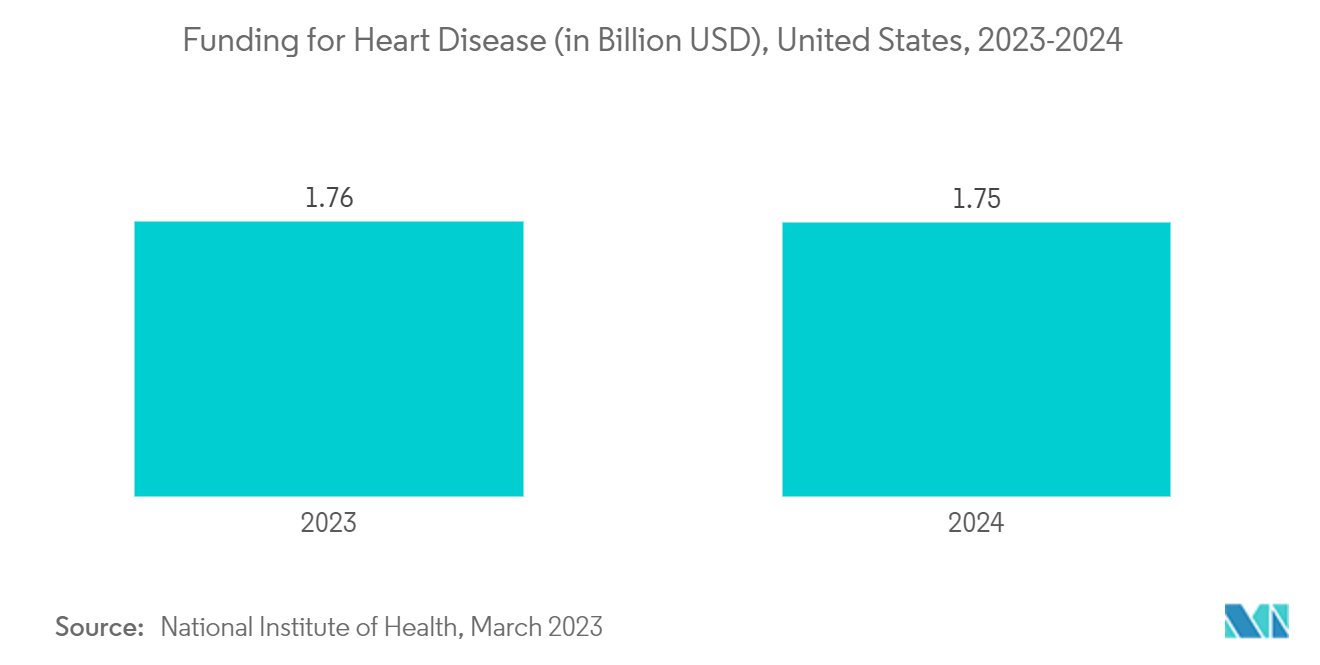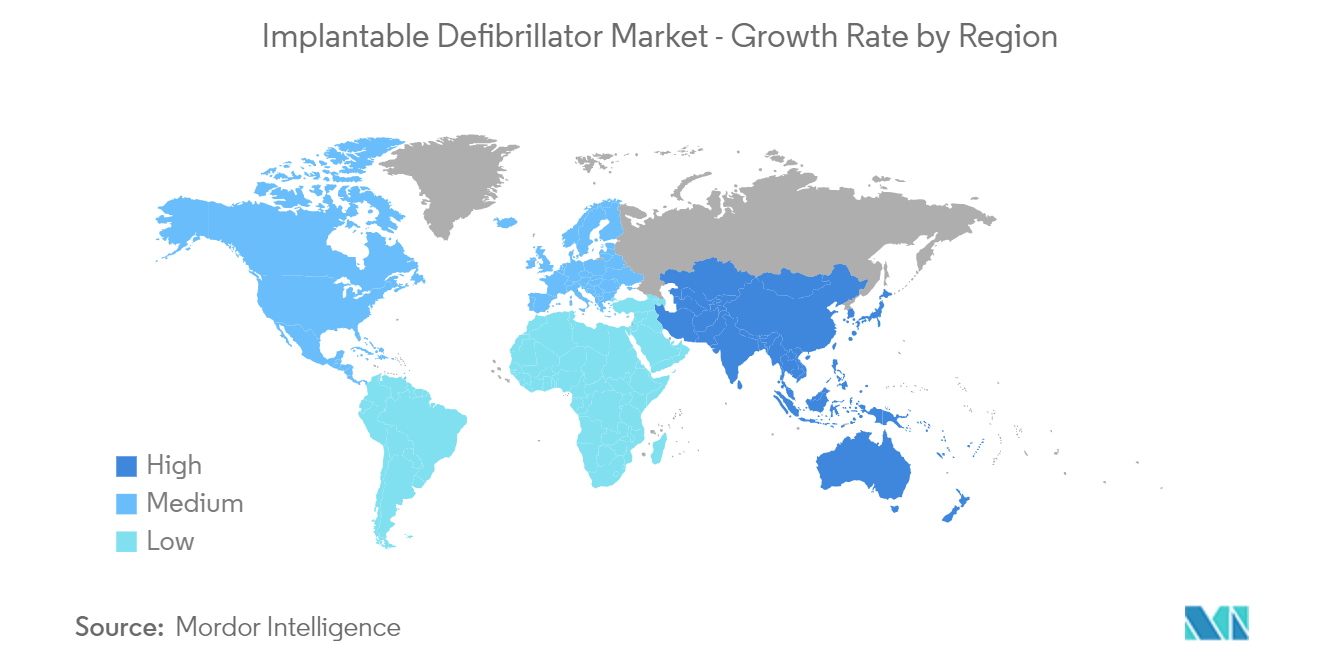Market Trends of Implantable Defibrillators Industry
Subcutaneous Implantable Cardioverter Defibrillator (S-ICD) is Anticipated to Show the Fastest Growth Over the Forecast Period.
The Subcutaneous Implantable Cardioverter Defibrillator (S-ICD) effectively senses, discriminates, and converts ventricular tachycardia/ventricular fibrillation using a subcutaneous electrode to analyze the heart rhythm. It is an established therapy for preventing sudden cardiac death and an alternative to a transvenous implantable cardioverter-defibrillator (ICD) system in selected patients.
The factors driving the segment's growth include the rising initiatives from the key market players and the increasing awareness of S-ICD among people.
Key market players are constantly working to identify the safety and effectiveness of subcutaneous implantable defibrillators, which are anticipated to drive segment growth. For instance, in December 2021, Boston Scientific Corporation conducted a study on S-ICD to assess the subcutaneous implantable defibrillator's efficacy, performance, and safety. The findings suggested that the S-ICD system prevents many difficulties connected with leads inserted in those locations because it offers protection without touching the heart or substernal area.
Furthermore, the various advantages of subcutaneous implantable defibrillators are anticipated to propel segment growth. For instance, according to the study published in the Arrhythmia & Electrophysiology Review (AER) Journal in July 2021, S-ICDs help patients avoid many of the short and long-term dangers of de novo implantation, including pneumothorax and heart perforation, and systemic infection. Additionally, S-ICDs underwent multicentre clinical studies where they demonstrated their efficacy, and new findings indicated that they might even be superior to Transvenous ICDs in some circumstances. Therefore, benefits associated with subcutaneous implantable defibrillators increase the demand and drive the growth of the segment studied.
Therefore, owing to the significant benefits of subcutaneous implantable defibrillators, the segment is anticipated to grow fastest over the forecast period.

North America is Expected to Hold a Major Share of the Studied Market Over the Forecast Period
North America is expected to hold a significant share of the overall implantable defibrillators market throughout the forecast period. It is due to the high healthcare expenditures, rising awareness of ICD's effectiveness in cardiovascular disorders such as arrhythmias, flutters, and fibrillations, and the presence of major key market players in the region.
Furthermore, the United States defibrillator market is growing within North America due to rising technological advancements through partnerships and the supportive reimbursement policy. In addition, the increase in government funding for cardiovascular diseases and the increase in research and development activities, among others, will drive the adoption of implantable defibrillators in the United States, driving market growth.
The rising prevalence of cardiovascular diseases (CVD), such as arrhythmias, among the population of the United States led to increased adoption of defibrillators for proper disease management. For instance, according to the Arrhythmia Alliance Report 2023, about 1 in 50 Americans under age 65, whereas 1 in 10 Americans over age 65 suffer from atrial fibrillation annually, and around 1 in 2,100 persons experience ventricular arrhythmias in the United States annually. Therefore, the considerable incidence of arrhythmia is projected to boost the demand for implantable defibrillators, which is anticipated to drive market growth.
Moreover, the rising adoption of implantable defibrillators in the hospitals and clinics of the United States is anticipated to drive market growth in the region. For instance, in December 2021, as part of an international clinical trial, Cleveland Clinic successfully implanted leadless pacemaker defibrillator systems in the first two patients in the world. The innovative device, which promises to provide treatment for low and increased heart rates, combines the technology of a leadless pacemaker with a subcutaneous implantable cardioverter defibrillator.
Therefore, the rising adoption of implantable defibrillators and the increasing prevalence of cardiac rhythm disorders in the region is anticipated to drive market growth.


